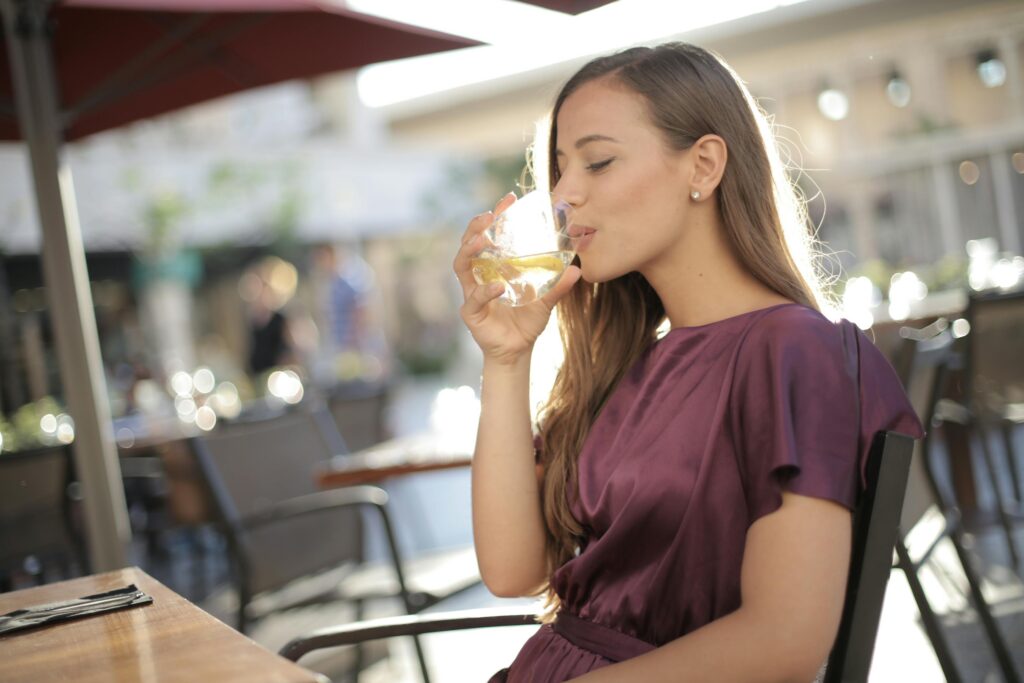
Not drinking alcohol for a month can have several potential benefits for individuals engaging in gymnastics or any physical activity. It’s important to note that these benefits may vary from person to person, and individual responses to alcohol abstinence can differ. Here are some potential advantages:
1. Improved Physical Performance:
Alcohol can impair coordination, balance, and reaction time. By abstaining from alcohol, gymnasts may experience improved physical performance and better focus during training and competitions which can prevent the risk of accidents and injuries.
2. Better Sleep Quality:
Alcohol can disrupt sleep patterns and reduce the quality of rest. Improved sleep is crucial for muscle protein synthesis and glycogen replenishment and to experience faster recovery times between workouts, which are vital aspects of gymnastic training in building strength and endurance.

3. Weight Management:
Alcoholic beverages often contribute empty calories to the diet. By cutting out alcohol, individuals may find it easier to maintain a healthy weight, which is important for gymnasts who need to manage their body weight and composition. Pint of 5% strength beer up to 222kcal (NHS Website)

4. Mental Clarity and Focus:
Abstaining from alcohol may lead to better mental clarity and focus. This can be particularly beneficial for gymnasts who require concentration, precision, and coordination in their routines.

5. Hydration:
Alcohol is a diuretic, meaning it can lead to increased urine production and potential dehydration. Staying hydrated is essential for optimal athletic performance, and abstaining from alcohol can contribute to better hydration.

6. Improved Intestinal Permeability:
Alcohol can increase intestinal permeability, also known as “leaky gut,” allowing substances to pass through the intestinal lining that normally wouldn’t. This can trigger an immune response and contribute to inflammation.
7. Building Healthy Habits:
Choosing not to drink for a month can be part of building and maintaining a healthy lifestyle. This can contribute to long-term well-being and consistent performance in gymnastics.
It’s important to emphasize that moderation in alcohol consumption is generally recommended for those involved in sports and fitness activities. If you have specific health concerns or questions about alcohol and its impact on your gymnastics performance, it’s advisable to consult a sports nutritionist who can provide personalized advice based on your individual needs and goals.
This article was written by our sports nutritionist, Pragya Khosla. As a registered Sports nutritionist Pragya is a dedicated advocate for holistic well-being. With a deep understanding of the intricate relationship between nutrition, exercise, and overall health, Pragya empowers individuals to achieve their wellness goals. Her articles serve as a testament to her commitment to spreading the message of sustainable health. Pragya’s expertise passion for sports and experience make her a trusted source of inspiration and knowledge in the realm of holistic wellness, transforming lives one step at a time. See more here.
References
- Roehrs, T., & Roth, T. (2001). Sleep, sleepiness, and alcohol use. Alcohol Research & Health, 25(2), 101-109.
- Shirreffs, S. M., & Maughan, R. J. (1997). Rehydration and recovery of fluid balance after exercise. Exercise and Sport Sciences Reviews, 25(1), 117-163
- Lukasiewicz, E., Mennen, L. I., Bertrais, S., Arnault, N., Preziosi, P., Galan, P., & Hercberg, S. (2005). Alcohol intake in relation to body mass index and waist-to-hip ratio: the importance of type of alcoholic beverage. Public Health Nutrition, 8(3), 315-320.
- Perry, P. J., Argo, T. R., Barnett, M. J., Liesveld, J. L., & Liskow, B. (2006). The association of alcohol-induced blackouts and grayouts to blood alcohol concentrations. Journal of Forensic Sciences, 51(4), 896-899.
- Bishehsari, F., Magno, E., Swanson, G., Desai, V., Voigt, R. M., Forsyth, C. B., … & Keshavarzian, A. (2017). Alcohol and gut-derived inflammation. Alcohol Research: Current Reviews, 38(2), 163-171.





